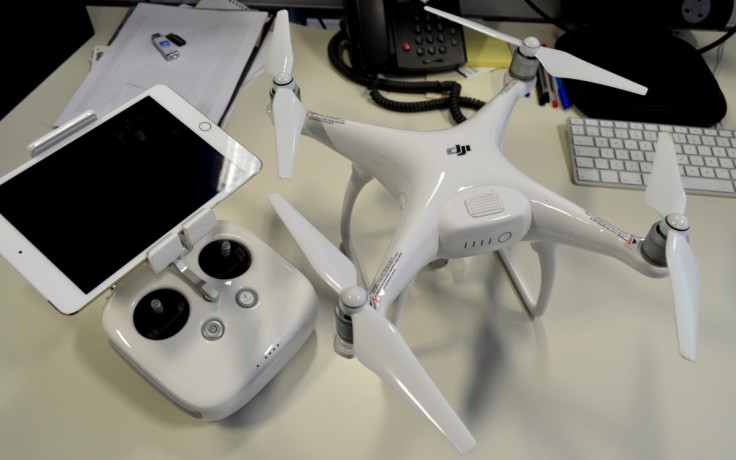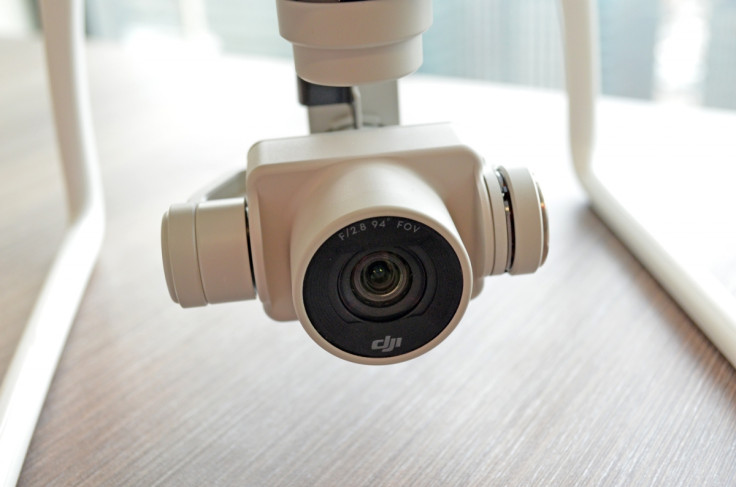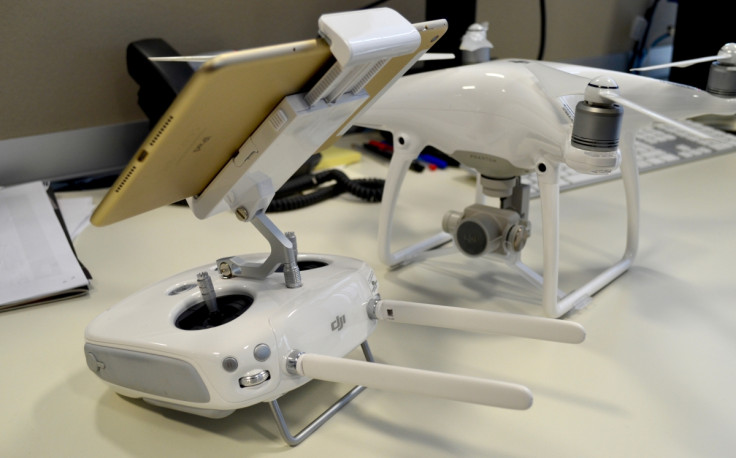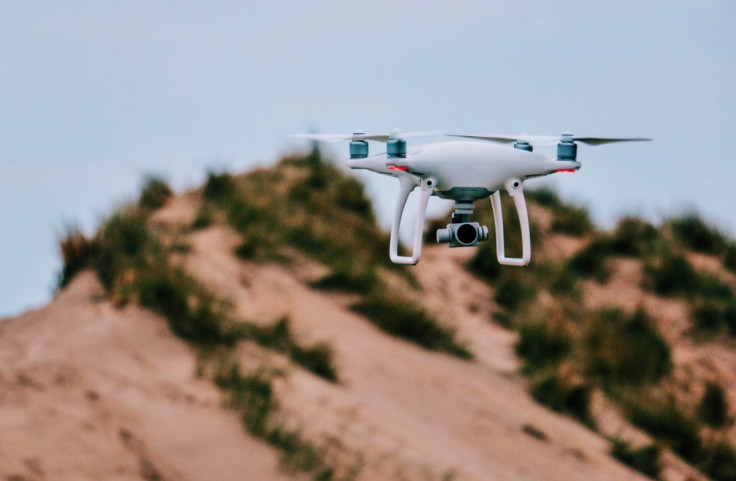DJI Phantom 4 review: The ultimate 4K flying machine

Just nine months after we tried out the Phantom 3 Professional, DJI is back with the fourth-generation Phantom. Costing a not-inconsiderate £1,229, this a serious piece of kit for those who want the ultimate consumer drone. The design remains almost unchanged, as does the 4K (Ultra HD) camera, but there is a new gimbal and autonomous flight modes made possible thanks to two new front-facing cameras.
The Phantom 4 claims to be the easiest DJI drone to fly yet, with the ability to track moving objects, avoid obstacles, and even fly backwards if an obstruction moves towards it. Add in a new sport mode which lets the drone fly at a crazy 45mph, and it only takes the briefest of flights to realise this is a gadget which deserves respect.
In fact, if you can resist the child-on-Christmas-morning rush to get the thing airborne, I suggest you spend a while reading the instructions, familiarising yourself with the complex controller and watching a few YouTube videos. There's an awful lot going on here, and with £1,200 of drone flying about at 40mph, you will want to be as prepared as possible.

DJI Phantom 4: Design
At first glance it is very similar to the Phantoms 2 and 3, the familiar four-rotor design sitting above two plastic landing feet and a camera suspended on a gimbal. But compare them directly and you'll see the Phantom 4 has a much neater design, especially around the gimbal mount. The extra plastic bodywork here adds 100g to the 3's 1,280g weight, but this has no effect on how the newer Phantom flies.

A major, and very welcome, difference is in the Phantom 4's packaging, which for the first time doubles as a reusable and durable carry case. It may only be a polystyrene box, but it has a sturdy handle and a locking latch to keep it securely closed. It's a well thought-out extra which means you don't need to cram the Phantom 4 into an unsuitable bag, or carry around a box covered in photos of the expensive drone inside.
DJI Phantom 4: Controller and basic flight
The controller has also changed very little. It is a two-stick system with a fold-out dock for holding your smartphone or tablet (iOS or Android). The Phantom 4 cannot be flown with just the controller, so you'll need to install the free DJI Go app on your phones or tablet before heading out for your first flight – and don't forget the USB cable to attach your phone to the controller. That cable can be used to update the controller software via your phone, while the drone itself is updated by plugging it into your laptop. Make sure all this is done before you head out for your first flight.

Once all is set up, switched on and ready to go, you simply tap the take-off icon on the phone screen, then slide to confirm. The Phantom 4 then revs its motors and leaps to a height of 1.2m, where it stays awaiting your next command. Noisy and clearly very powerful, the Phantom always makes me feel slightly anxious the first time it takes off.
The rotors are not protected and the helicopter-style downdraft kicks up dirt and dust from the ground below; it doesn't take much imagination to understand the serious harm you could inflict on yourself, others and your bank balance should you misjudge a manoeuvre. Again, this is a gadget which can only truly be enjoyed after learning the controls and thinking very carefully about what you're doing.
Push the left stick up to gain altitude and to the side to rotate, then push the right stick up or down to move forwards and backwards, and left or right to glide from side to side.

New with the Phantom 4 is its ability to fly to any point you tap on the phone screen, and the drone is smart enough to travel there smoothly so not to produce choppy video. The camera stays locked onto the object as it moves and the drone follows it, being sure to stop if its path is blocked. It can see solid walls, people and large trees, but thin branches and telephone wires are hazards to be flown around manually if you want to avoid an expensive accident. Flown in this mode I found DJI's claim of 28 minutes of battery life to be accurate. Sport mode takes this down a fair bit, but at least 20 minutes is always achievable.
DJI Phantom 4: Advanced and autonomous flight
With obstacle avoidance switched on you are limited to 22mph, but switch it into normal mode and this climbs to 35mph, the top speed of the Phantom 3 Professional we flew in 2015. After getting to grips with flying the Phantom 4 without its avoidance safety net, it's time to try out the new sport mode. This takes the top speed up to 45mph and lets the drone ascend by six meters per second, or 13.4mph. There is a switch on the controller's shoulder, covered by a sticker which you have to remove to select sport mode.

The Phantom 4 in sport mode is insanely fast, zipping along more quickly than may expect.
The drone leans forward steeply when accelerating, so much so that the rotors can be seen by the camera for a few seconds until the gimbal adjusts. Any nervousness felt earlier soon disappears once you've thrown the Phantom 4 around in sport mode. The drone is incredibly nimble, yet always perfectly stable, as I hope is clear from the video embedded below.
I found the drone to be much more manageable at higher altitude, where it is well clear from people, buildings and trees, yet comfortably below passing aircraft. At least, it is with the app keeping me from exceeding the 500ft altitude limit imposed across most of the UK. Switch the limiter off, which I do not suggest you do, and DJI says the Phantom 4 can fly to over 19,000 feet which is, frankly, ludicrous and clearly dangerous. Similarly mad is how it can fly up to three miles from the controller.
Back to safe, legal flight and the DJI's ability to hover perfectly impressed me almost as much as its outright speed. Let go of the controller and the live footage sent to your phone looks like it has been paused - until you notice a train moving in the distance. It is absolutely rock solid and pointing the 4K camera up and down produces the kind of smooth, gradual shots you might see on a BBC documentary.
My colleague Mary-Ann tried out the Phantom 4's new obstacle avoidance technology:
Outdoor photography provided by Dan Blows
Flying the Phantom 4 is stupendously good fun. The power, speed, maneuverability and stability are all truly excellent, video quality from the 4K camera is superb and various flight modes means there is something for everyone, right from a first-time drone flyer to a professional pilot.
But the Phantom's strength can lead to a weakness. This is a massively complex device which takes some getting used to and which demands you spend time learning how everything works before flying for the first time. I'm always the last person to open the instructions, but with the Phantom 4 I was more than happy to study everything carefully before flying.
Your first few flights should be handled with caution, but it doesn't take long to get comfortable with the Phantom 4. At £1,229 it's hugely expensive, but if you want to invest in high-end drone flying and video recording, this is your best option.
- Design: 9/10 – Good build quality and a neater design than the Phantom 3
- Ease of use: 8/10 – Complex at first, but hugely confidence inspiring once familiar
- Camera: 9/10 – Excellent video, but some exposure issues in bright light. Rotors can sometimes be seen in frame
- Battery: 8/10 – A good improvement on the Phantom 3, battery can achieve over 25 minutes
- Features: 9/10 – Loads of features make it accessible for everyone, but also complex
- Value: 6/10 – Hugely expensive and not a purchase to be made on a whim
The Good:
- Incredibly stable flight
- Controls are simple once familiar
- Great design and robust build quality
The Bad:
- Number of features and settings intimidating at first
- Rotors appear in footage when changing speed and direction quickly
- Very expensive; not a toy
© Copyright IBTimes 2025. All rights reserved.




















